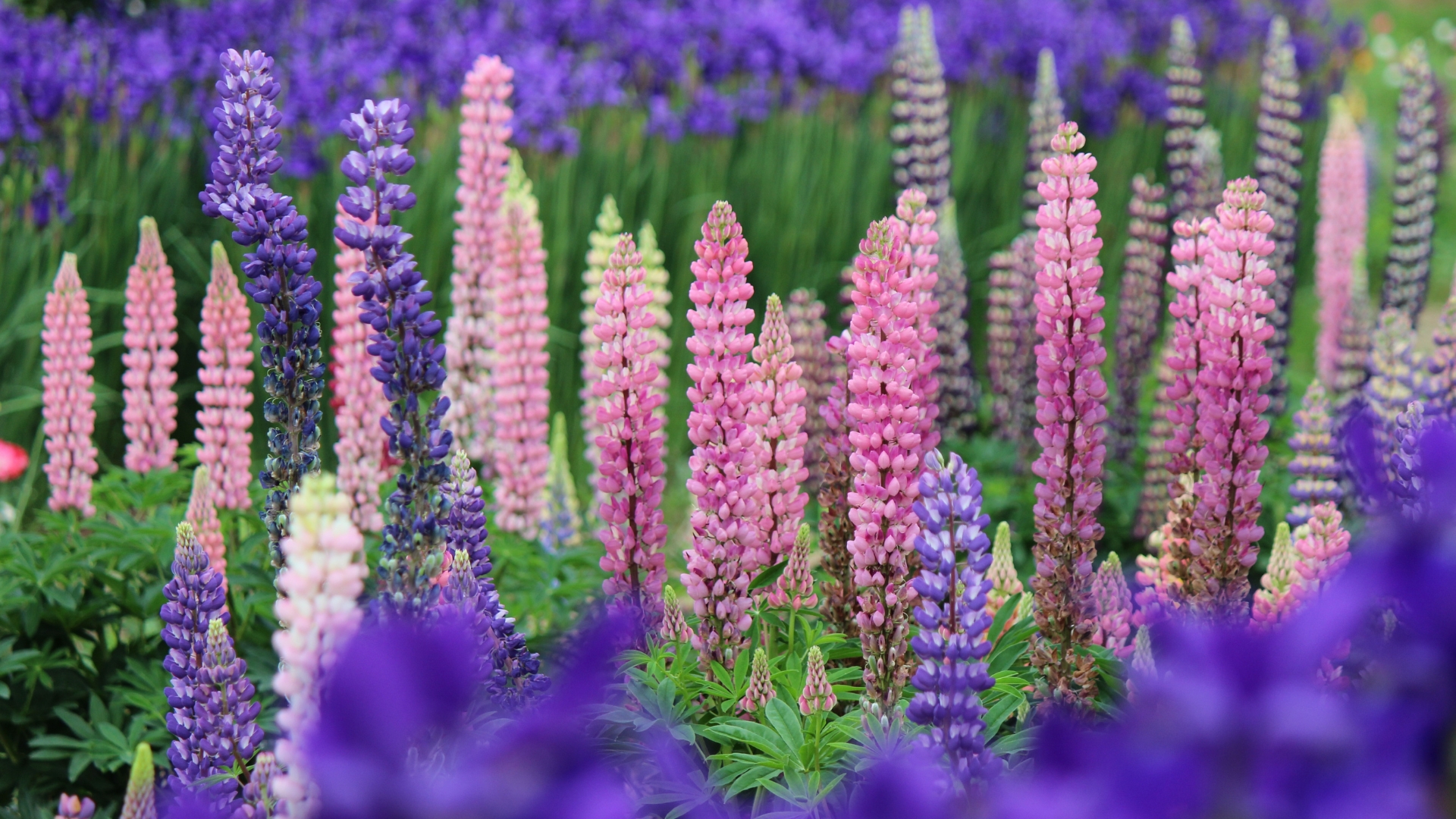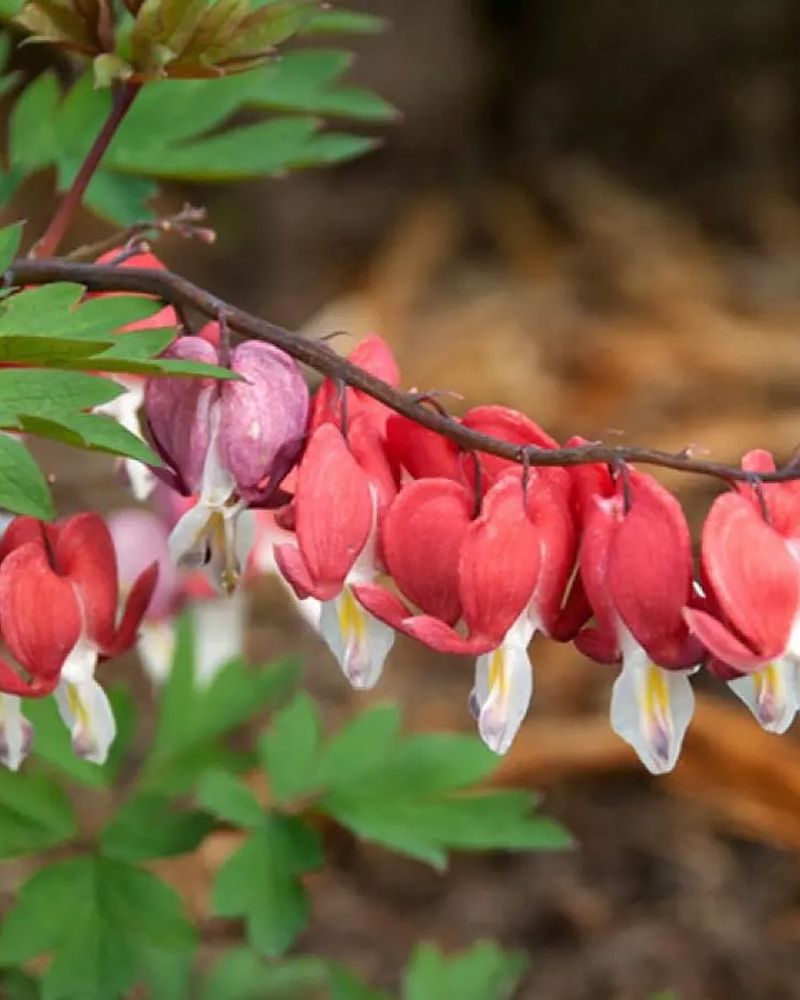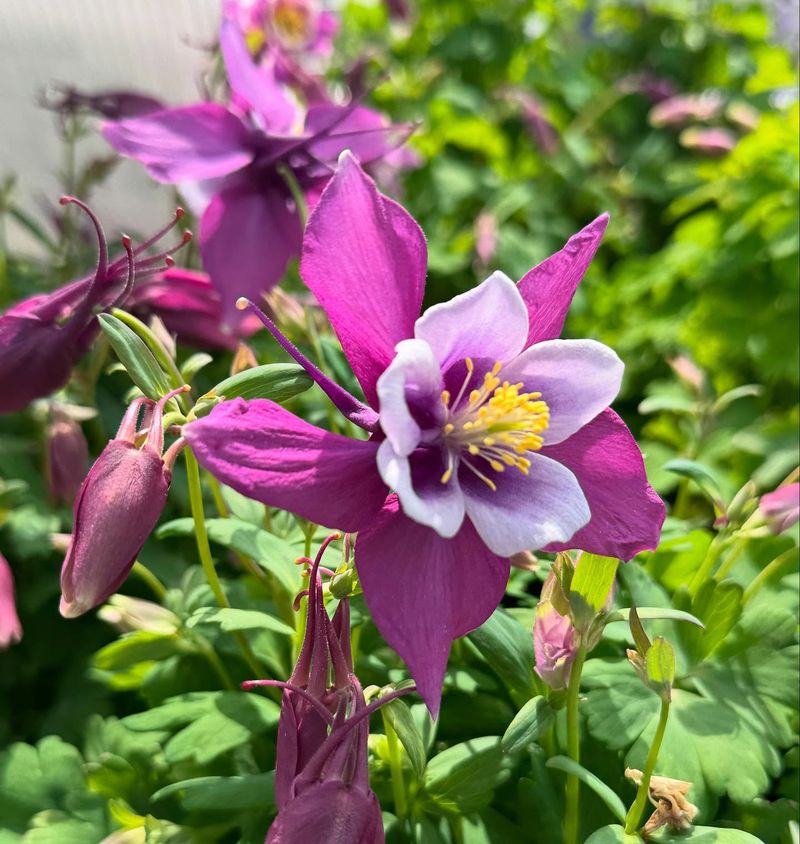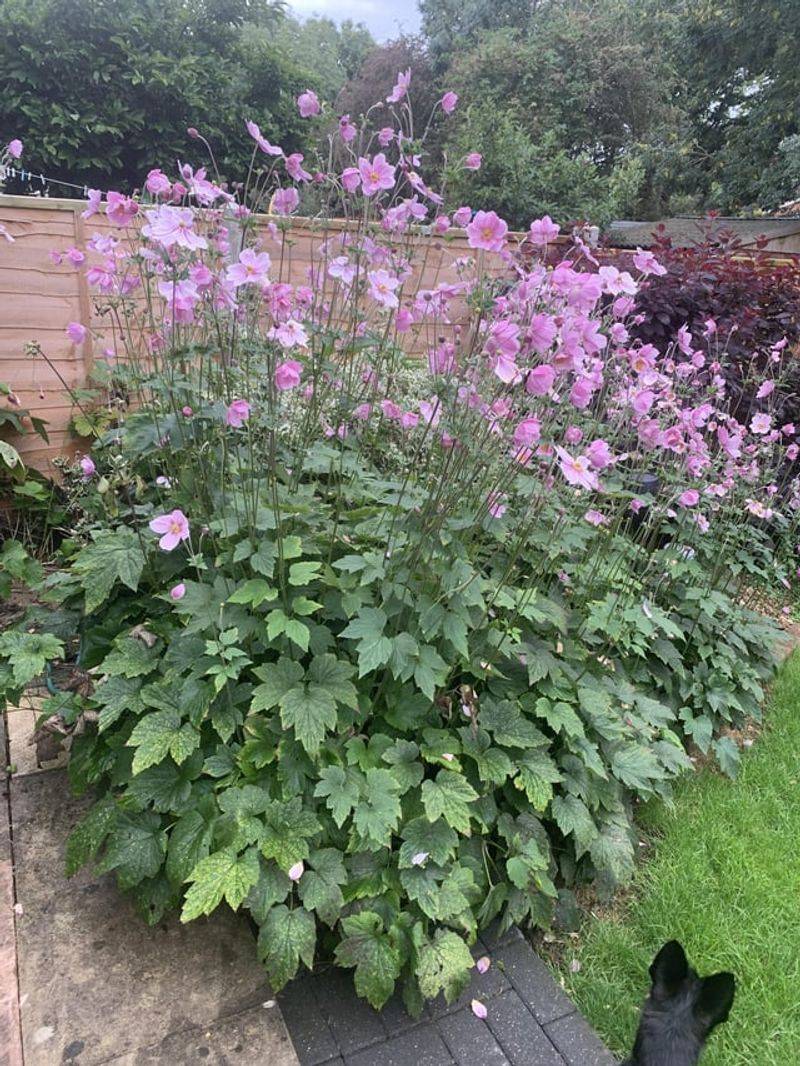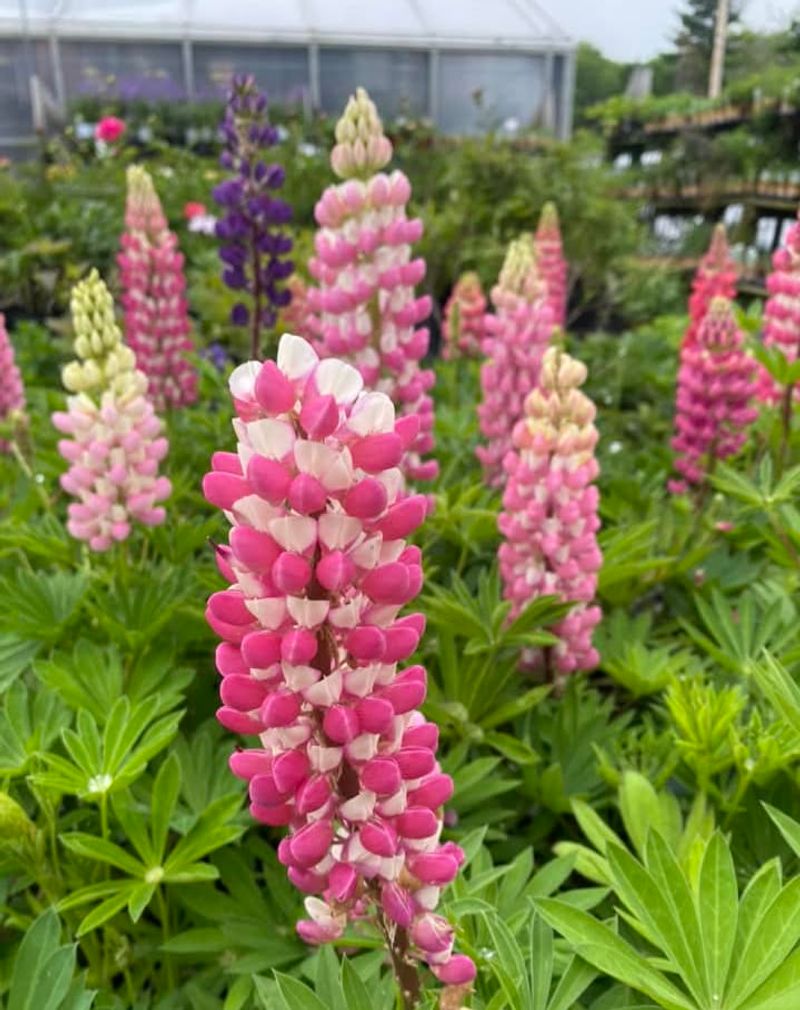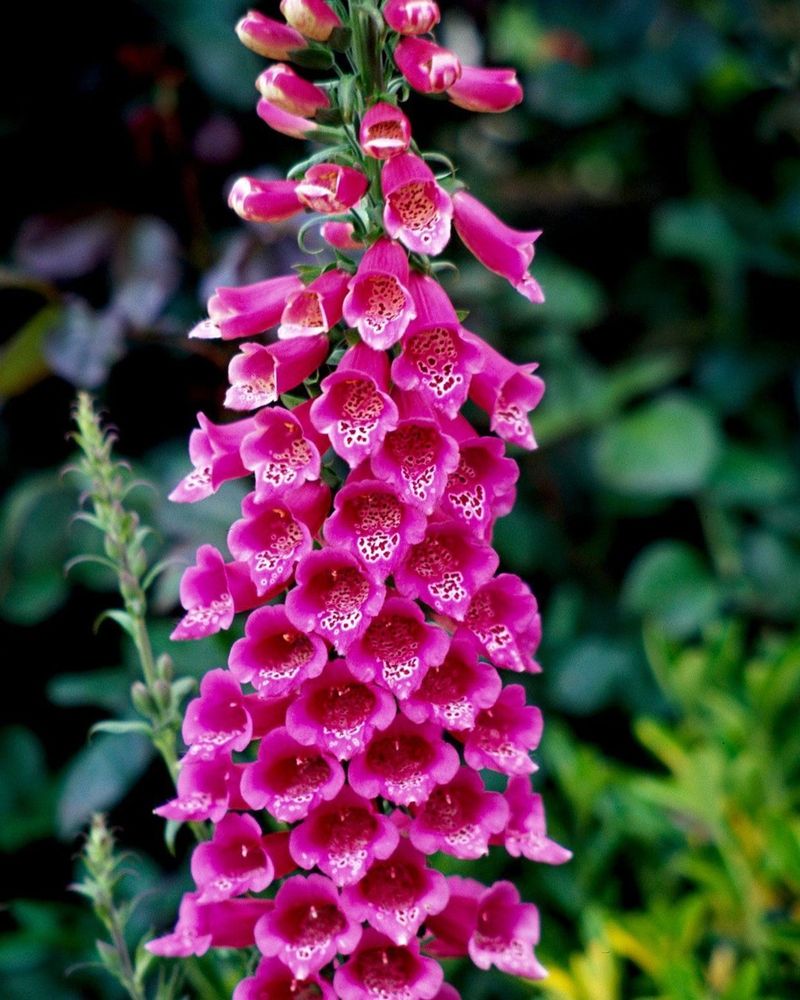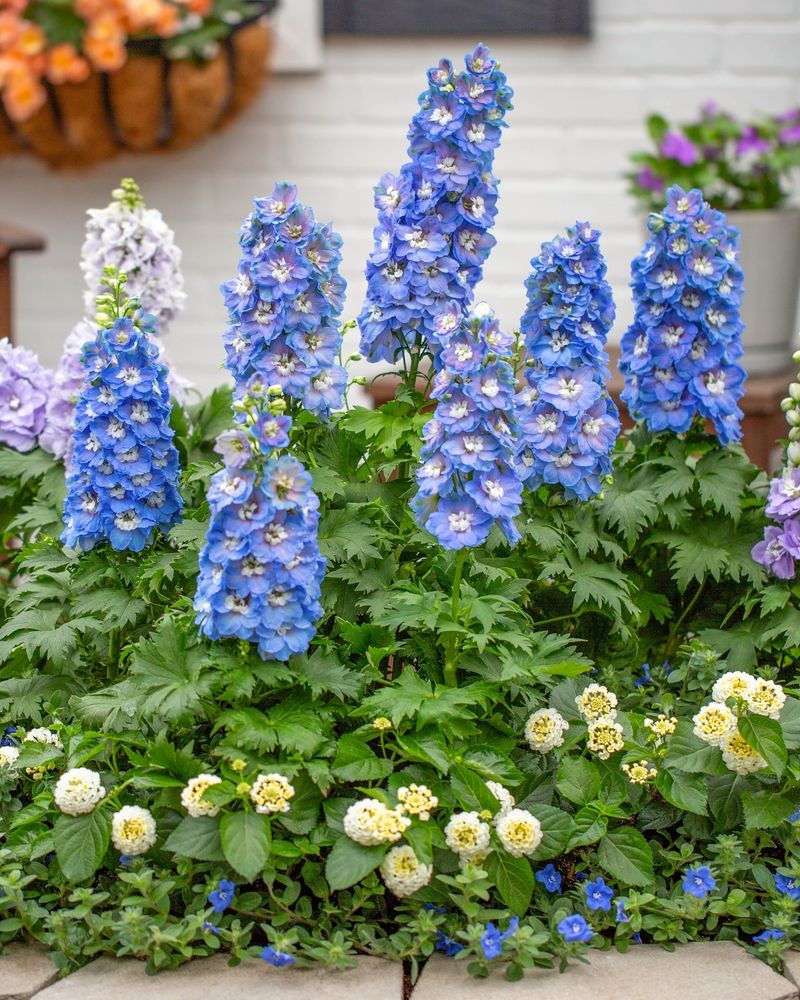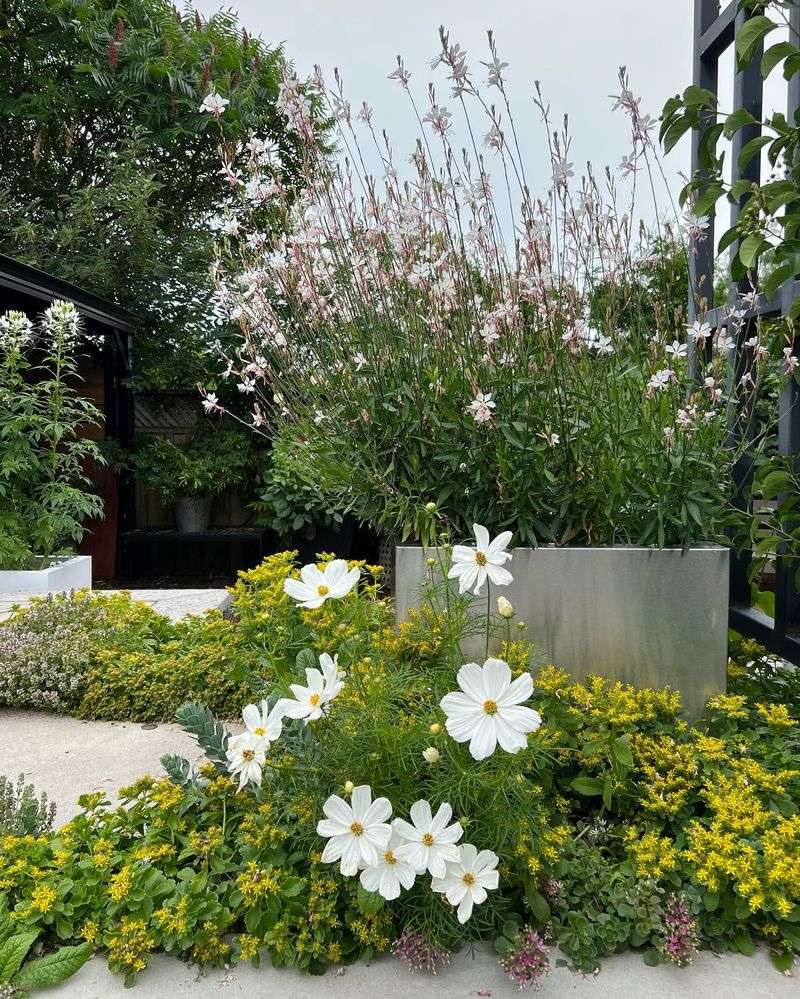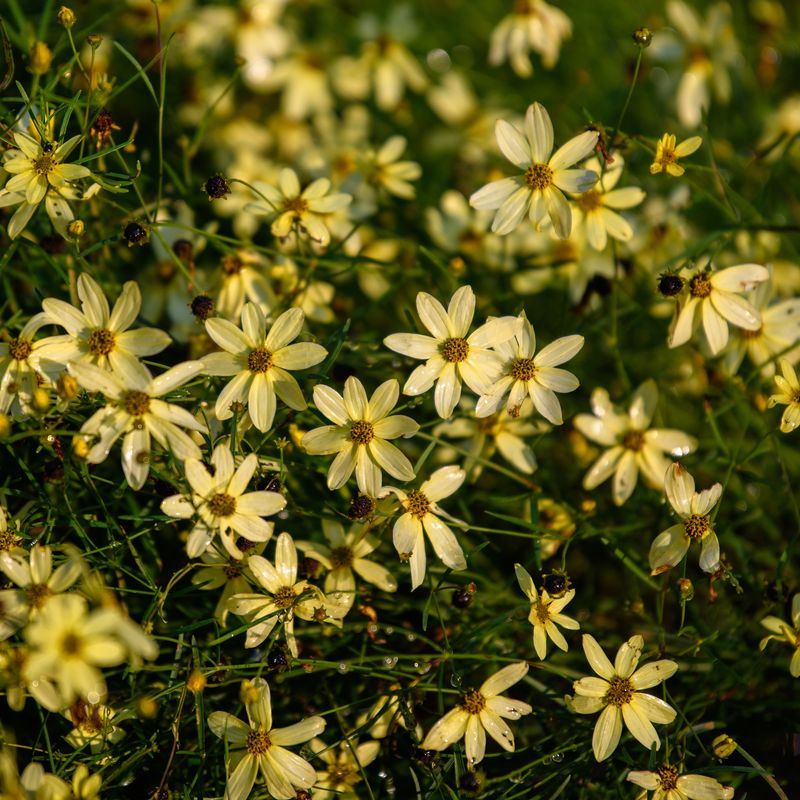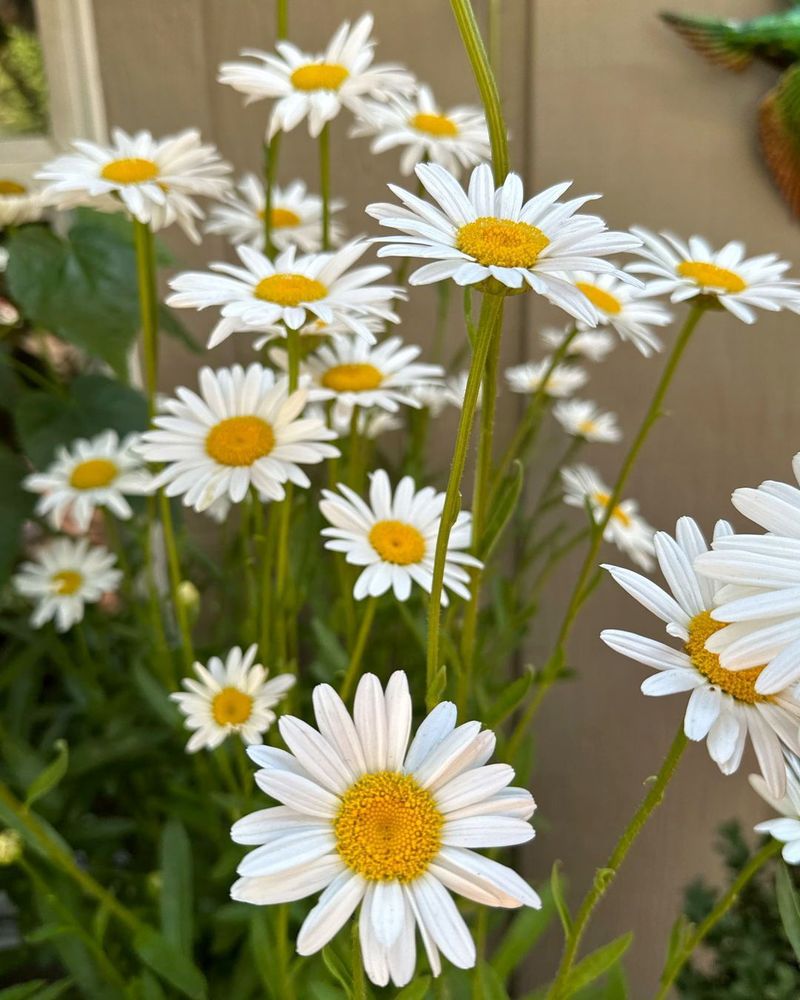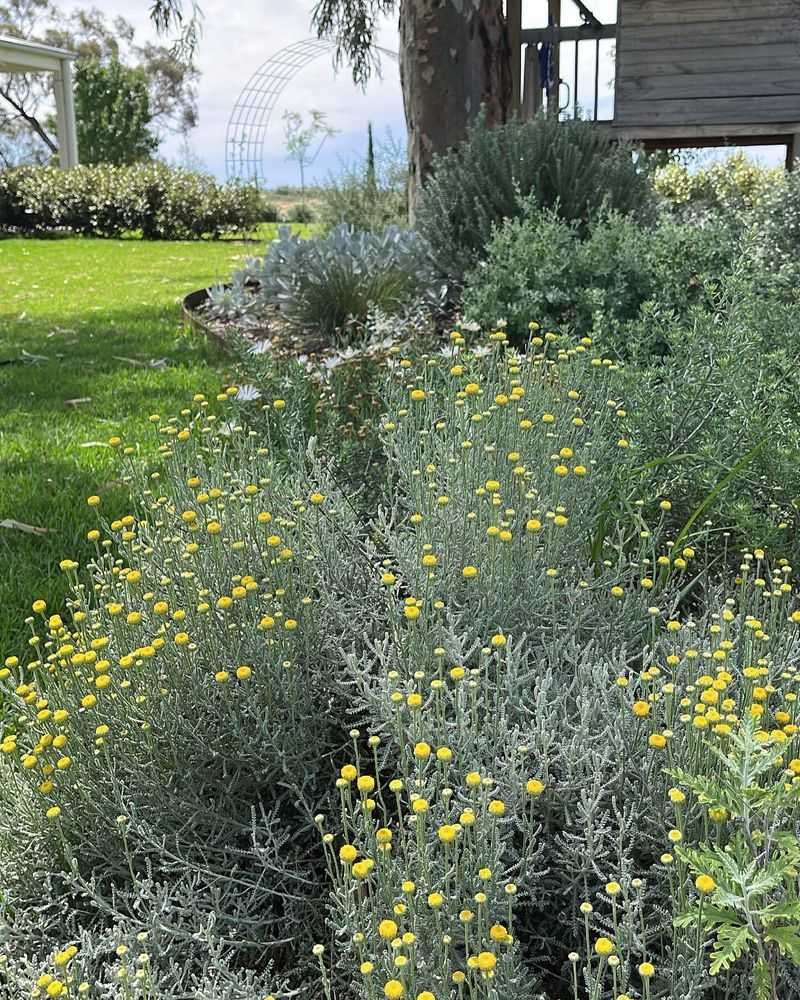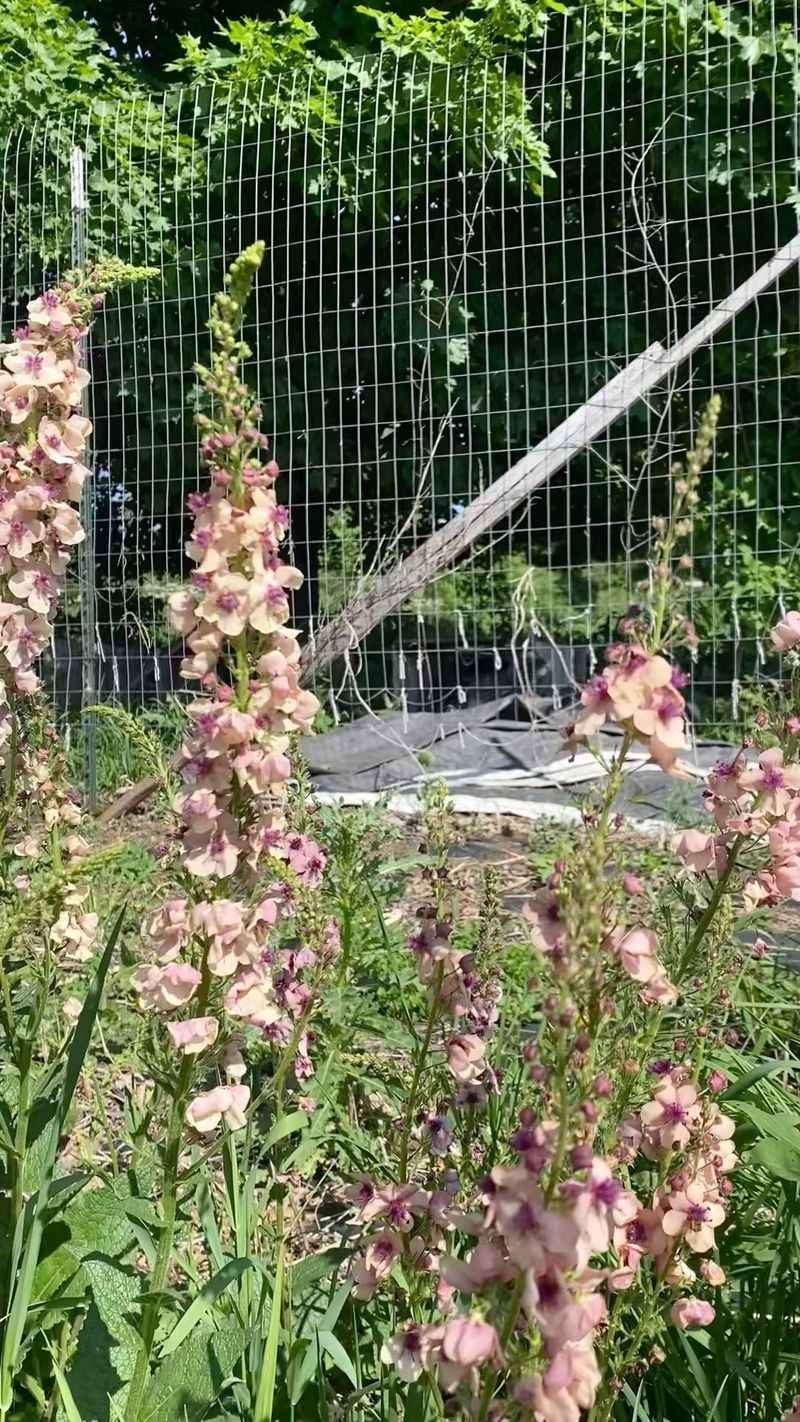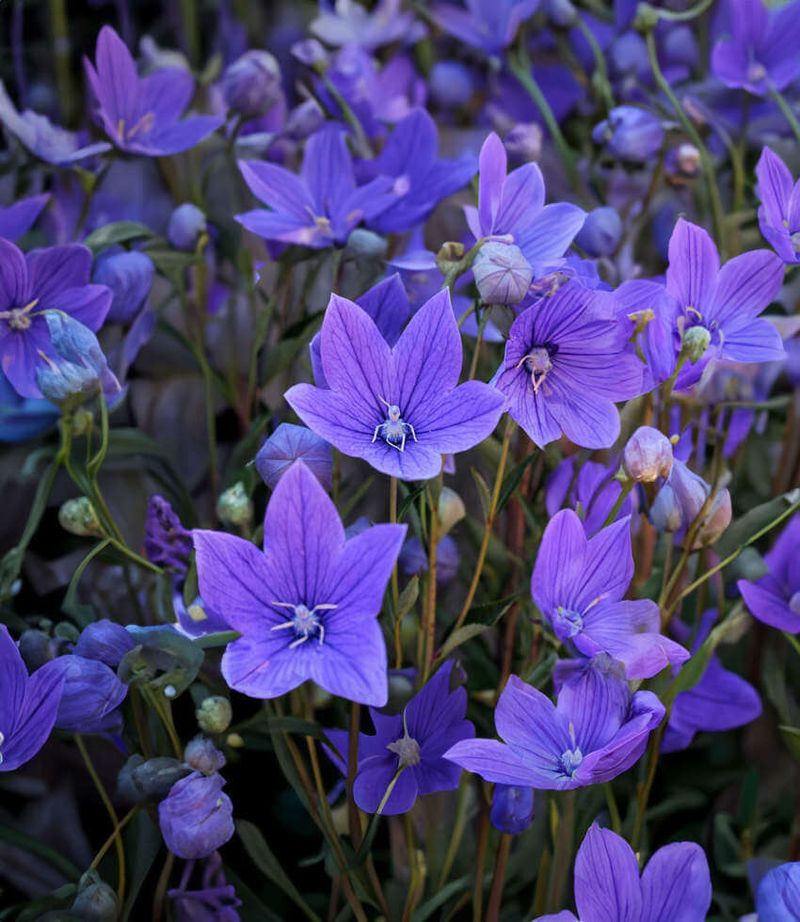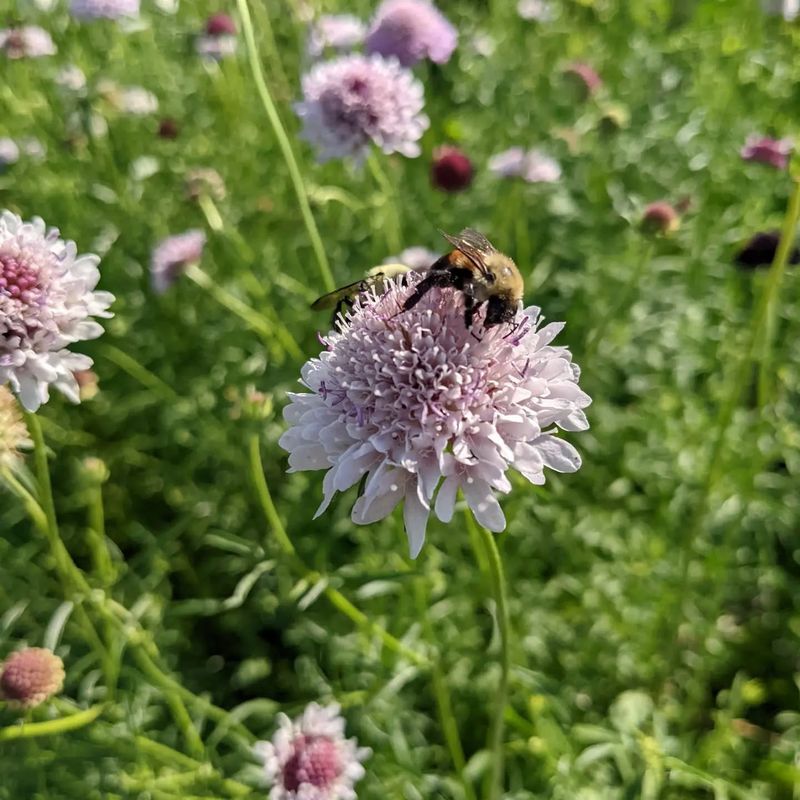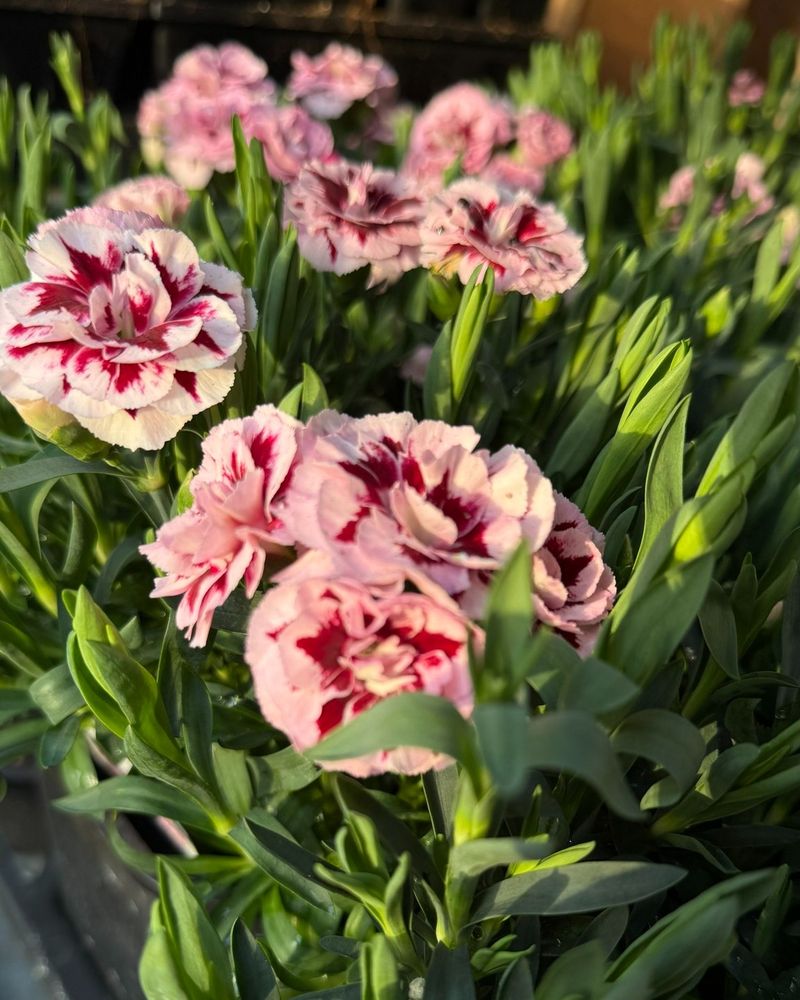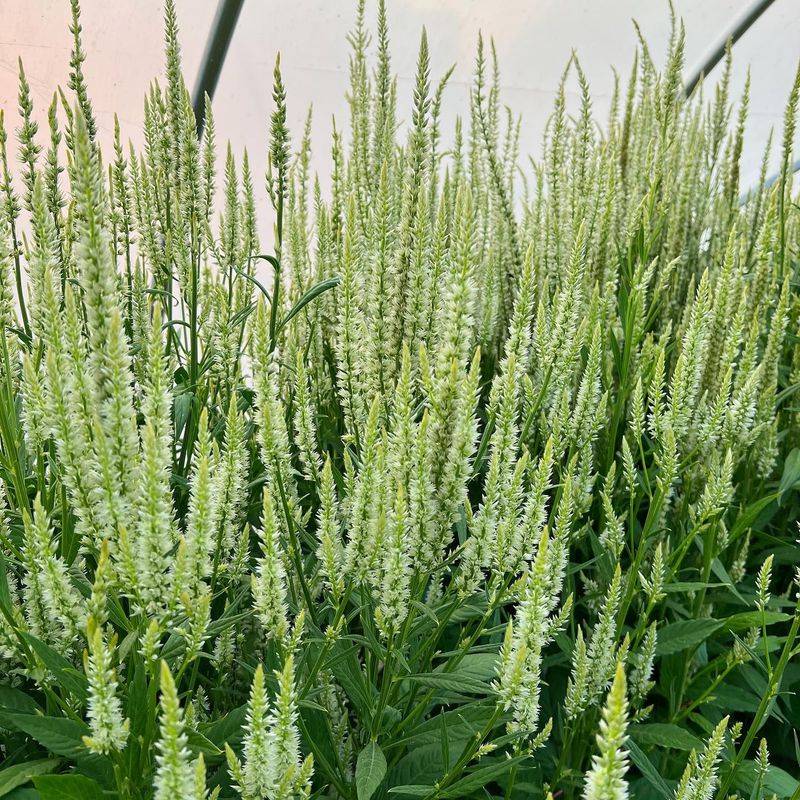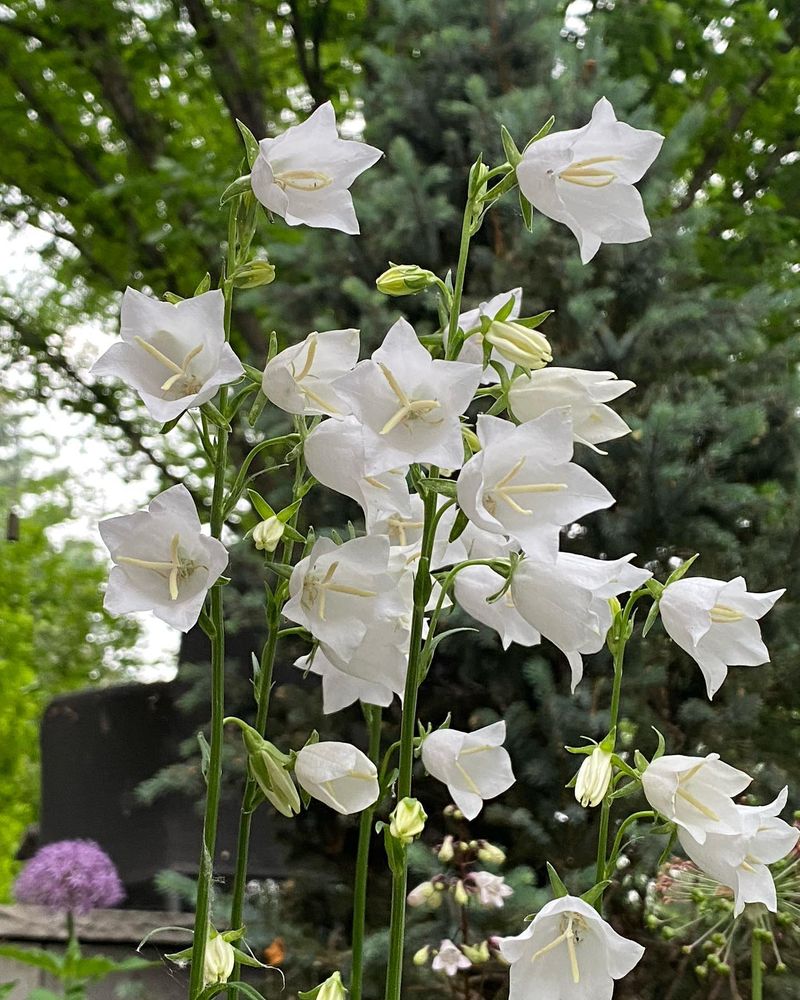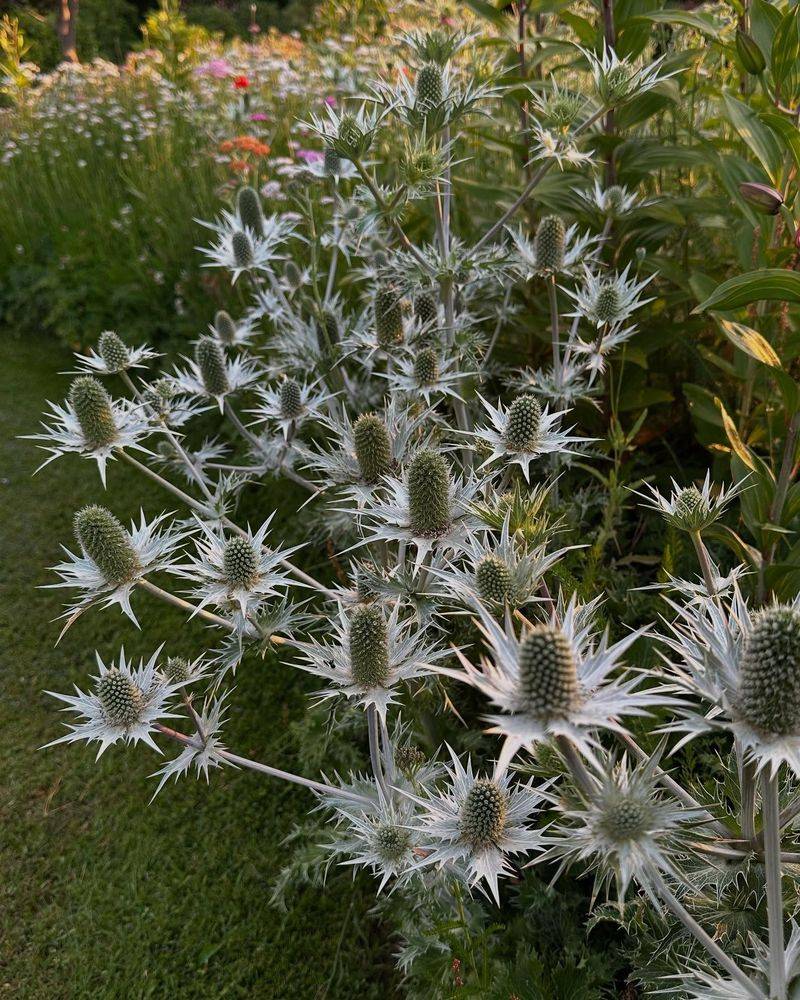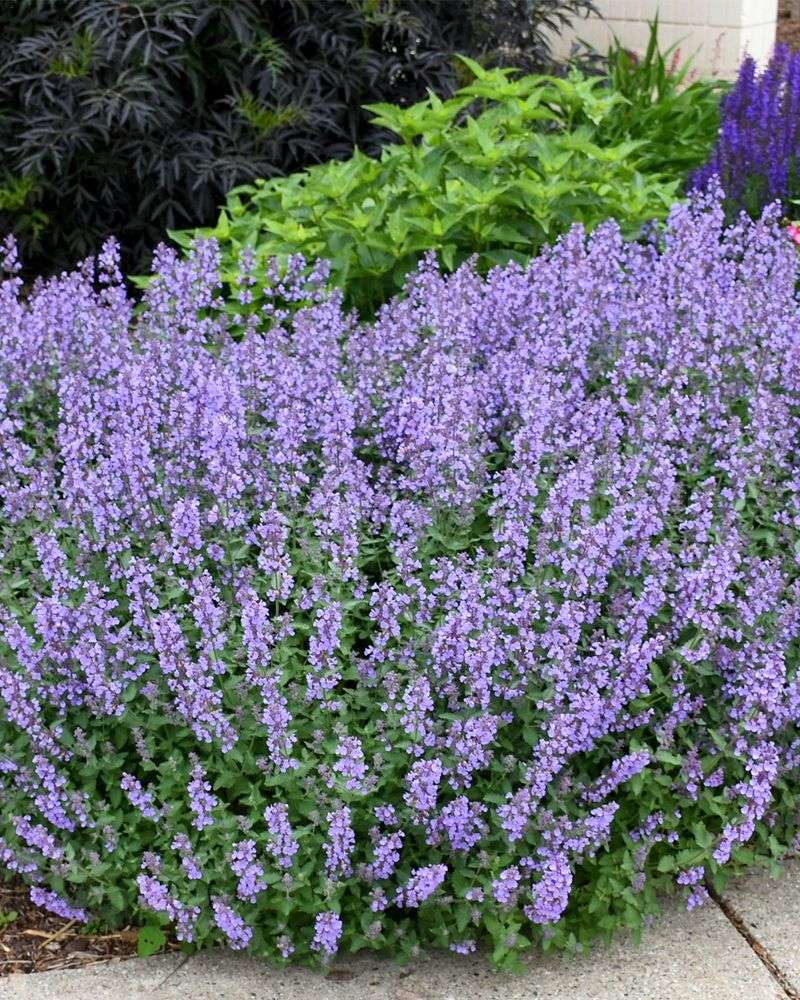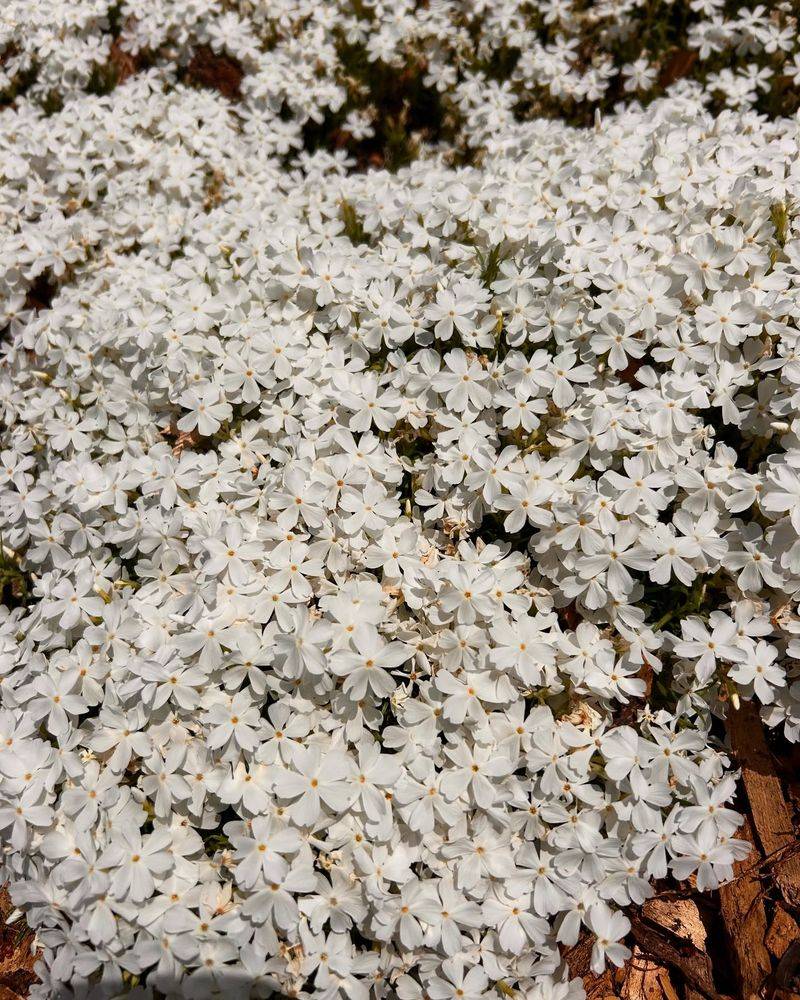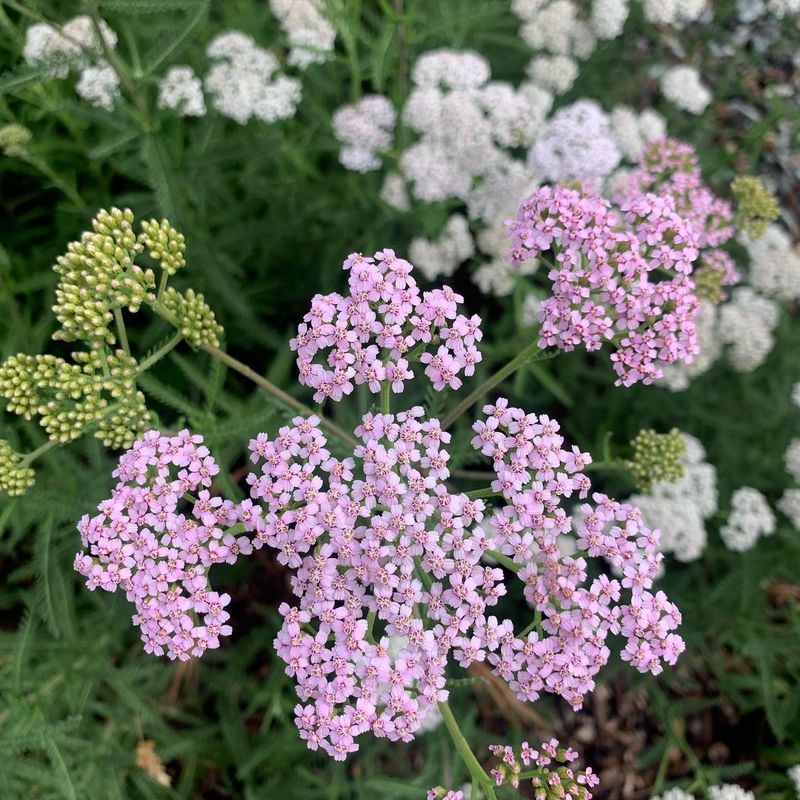Some perennials are like the life of the party, sticking around and thriving year after year. But then there are those pale perennials that start strong and quickly fade away, leaving you wondering where the color went.
If you’ve ever planted something that promised to be a garden staple, only to watch it wither away faster than expected, you’re not alone.
In this list, we’ll take a look at 20 pale perennials that just don’t quite make it in the long haul. Get ready for a few surprising choices that might leave you second-guessing your garden picks!
1. Bleeding Heart
Delicate and romantic-looking, these plants often go dormant by midsummer. Bleeding Heart displays arching stems with heart-shaped blooms in soft pink or white shades that capture attention in spring gardens.
Unfortunately, hot weather sends them into early dormancy, leaving gaps in your garden design. Without proper care and ideal conditions, they may not return the following year at all.
Providing afternoon shade and consistent moisture helps extend their garden performance, but be prepared to fill their space with late-season bloomers once they retreat underground.
2. Columbine
Fairy-like blooms dancing above delicate foliage make these spring favorites irresistible to gardeners. Columbine comes in pale blue, lavender, white, and soft pink varieties that seem magical when they first appear.
Despite being classified as perennials, they often behave more like short-lived visitors. Their tendency to self-seed creates an illusion of permanence, but the original plants frequently decline after just 2-3 seasons.
Leaf miners and crown rot commonly afflict these beauties, hastening their departure from your garden beds. While they might leave volunteer seedlings behind, these typically don’t match the parent plant’s color or form.
3. Japanese Anemone
Late summer brings these elegant flowers with their paper-thin white or pale pink petals swaying on tall stems. Japanese Anemones create a dreamy effect in the garden when many other perennials have finished blooming.
Despite their initial vigor, they’re surprisingly finicky about growing conditions. Too much sun scorches them, while poor drainage leads to root rot and complete disappearance.
Many gardeners watch in disappointment as these beauties fail to return after a harsh winter or particularly hot summer. Their delicate nature belies their reputation as reliable perennials, especially in regions with temperature extremes.
4. Lupine
Majestic spires reaching skyward in soft blues, pinks, and whites make these cottage garden classics hard to resist. Lupines create a dramatic vertical element that complements more rounded flower forms in spring displays.
Unfortunately, their glory is often short-lived in many gardens. Hot, humid summers cause rapid decline, and their deep taproots resist division, making them difficult to propagate vegetatively.
While they may self-seed, the resulting offspring rarely match the parent plants if they were hybrids. Many gardeners find themselves treating these supposed perennials as biennial plants, constantly replanting to maintain their presence.
5. Foxglove
Towering flower spikes covered in tubular blooms create vertical drama in partially shaded spots. Foxgloves produce pale pink, white, or lavender bell-shaped flowers that attract hummingbirds and create a woodland feel.
Technically biennial rather than true perennials, they often disappear after their spectacular second-year flowering. Even perennial varieties tend to be short-lived, rarely lasting more than three seasons in most gardens.
Allowing them to self-seed helps maintain their presence, but the resulting plants may take unexpected forms or colors. Many gardeners find themselves continuously adding new plants to replace those that vanish after their magnificent flowering performance.
6. Delphinium
Cottage garden enthusiasts dream of these stately flowers with their towering spires in soft blues, lavenders, and whites. Delphiniums create dramatic vertical elements that draw the eye upward and add architecture to perennial borders.
Sadly, these stunners often prove frustratingly temporary. Their susceptibility to powdery mildew, crown rot, and slug damage means many disappear after just one or two seasons, especially in hot, humid climates.
Even with perfect care, most varieties behave more like short-lived perennials, requiring frequent replacement. Their shallow root systems and brittle stems make them vulnerable to weather extremes, further contributing to their fleeting garden presence.
7. Gaura
Dancing like butterflies on wiry stems, these airy blooms add movement and lightness to garden borders. Gaura produces masses of small white or pale pink flowers that hover above the foliage from summer through fall.
Despite their extended blooming period, they frequently disappear after just a couple of seasons. Poor winter drainage often leads to root rot, while heavy clay soils can cause these plants to simply vanish overnight.
Even in perfect conditions, many gardeners find their gaura plants becoming woody and less productive after the third year. Their delicate appearance matches their fragile nature in the garden, making them beautiful but temporary additions to perennial designs.
8. Coreopsis ‘Moonbeam’
Soft yellow blooms cover these plants from early summer through fall when first planted. Coreopsis ‘Moonbeam’ creates a cloud of pale lemon-colored flowers that brightens any sunny border and pairs beautifully with blues and purples.
Despite initial vigor, this cultivar often fades away after a few seasons. Unlike its more robust species cousins, ‘Moonbeam’ tends to decline in flowering and overall vigor by the third year.
Wet winter soils frequently lead to crown rot and complete disappearance. Even with excellent drainage, many gardeners report this pale beauty gradually producing fewer flowers before vanishing entirely from the garden landscape.
9. Shasta Daisy
Classic white blooms with sunny yellow centers make these summer favorites instantly recognizable. Shasta Daisies create cheerful displays that evoke meadow-like feelings in perennial borders and cutting gardens.
Despite their sturdy appearance, many varieties decline rapidly after their initial spectacular showing. Heavy clay soils and winter wetness often lead to crown rot, causing whole clumps to disappear between seasons.
Even with division every couple of years, many gardeners find their Shasta Daisies gradually producing fewer flowers before fading away entirely. The newer, showier cultivars with extra-large blooms seem particularly prone to this disappearing act.
10. Lavender Cotton
Silvery-white foliage creates a beautiful backdrop for other garden plants throughout the growing season. Lavender Cotton forms neat mounds that look almost frosted, adding textural contrast to flower borders.
Despite its initial neat appearance, this plant often becomes woody and sparse after just a few seasons. Winter wetness frequently causes root rot, leading to complete disappearance in many gardens.
Even with perfect drainage, the center of older plants tends to die out, leaving unattractive gaps. Regular pruning helps extend its lifespan somewhat, but many gardeners find themselves replacing these pale beauties every few years as they gradually decline.
11. Verbascum
Architectural flower spikes rise dramatically above rosettes of fuzzy leaves in early summer. Verbascum produces pale yellow, white, or soft pink blooms that attract pollinators and add vertical interest to garden designs.
Many gardeners are disappointed when these plants disappear after their spectacular flowering display. Most varieties behave more like biennials or short-lived perennials, blooming magnificently before declining rapidly.
Excessive humidity and poor drainage often hasten their departure from gardens. While they may self-seed, the resulting offspring frequently revert to less showy forms or colors, leaving gardeners missing the original plants they fell in love with.
12. Balloon Flower
Fascinating buds that puff up like tiny balloons before opening into star-shaped blooms captivate gardeners each summer. Balloon Flower produces pale blue, white, or soft pink flowers that emerge from these distinctive inflated buds.
Despite their initial charm, many gardeners find these plants mysteriously vanishing after a few seasons. Their late emergence in spring often leads to accidental damage during garden cleanup or inadvertent digging in their area.
Poor drainage during winter dormancy frequently leads to crown rot and complete disappearance. Even with careful marking and perfect soil conditions, many balloon flowers gradually produce fewer stems and blooms before fading away entirely.
13. Scabiosa
Delicate pincushion-like flowers dance above mounds of foliage throughout summer when first established. Scabiosa produces pale blue, lavender, or white blooms that attract butterflies and add charming texture to perennial borders.
Unfortunately, these cottage garden favorites often decline rapidly after their initial flush of blooms. Winter wetness frequently causes crown rot, while humid summers can lead to powdery mildew and diminished vigor.
Many gardeners find their scabiosa plants gradually producing fewer flowers before disappearing entirely by the third season. Even with perfect drainage and regular deadheading, these pale beauties rarely persist as long-term garden residents in many regions.
14. Dianthus
Spicy-scented blooms with fringed petals create charming displays in spring and early summer gardens. Dianthus produces pale pink, white, or lavender flowers that carry a delightful clove-like fragrance on sunny days.
Despite their initial robust flowering, many varieties decline rapidly after a couple of seasons. Poor drainage during winter dormancy often leads to crown rot and complete disappearance from garden beds.
Even with perfect soil conditions, older plants tend to become woody and sparse in the center, producing fewer blooms each year. While some varieties are truly perennial, many of the showier cultivars with larger, paler blooms perform more like short-term visitors in the garden.
15. Veronica ‘Icicle’
Elegant white flower spikes create vertical accents in summer borders when first established. Veronica ‘Icicle’ produces pristine white blooms that stand out beautifully against green foliage and complement other garden colors.
Sadly, this pale beauty often fades away faster than its more colorful cousins. Poor winter drainage frequently leads to root rot, while hot, humid summers can cause powdery mildew and rapid decline.
Many gardeners report this cultivar mysteriously disappearing after just two or three seasons, even with attentive care. Unlike some other veronica varieties that spread reliably for years, ‘Icicle’ seems particularly prone to this vanishing act in many garden settings.
16. Peach-Leaved Bellflower
Graceful nodding bells dangle from slender stems in early summer gardens. Peach-Leaved Bellflower produces pale blue or white blooms that create a delicate, almost fairy-like effect in partially shaded borders.
Despite their enchanting appearance, these plants frequently disappear after just a few seasons. Their shallow root systems make them vulnerable to drought stress, while poor drainage can lead to crown rot and complete loss.
Many gardeners find these bellflowers gradually producing fewer stems each year before vanishing entirely. Self-seeding sometimes creates the illusion of perennial performance, but the original plants often fade away much sooner than expected.
17. Sea Holly ‘Miss Wilmott’s Ghost’
Architectural and unusual, this pale variety creates striking structural elements in summer gardens. Sea Holly ‘Miss Wilmott’s Ghost’ displays silvery-white bracts surrounding thistle-like flowers that maintain interest even when dried.
Unlike its more colorful blue cousins, this ghostly variety tends to be shorter-lived in many gardens. Its deep taproot makes transplanting difficult, while poorly drained winter soils often lead to complete disappearance.
Many gardeners find this pale beauty flowering magnificently for a season or two before mysteriously vanishing. While it may self-seed, the resulting offspring sometimes revert to different forms, leaving gardeners missing the distinctive pale cultivar they originally planted.
18. Catmint ‘White Cloud’
Airy sprays of tiny white flowers hover above aromatic gray-green foliage when first planted. Catmint ‘White Cloud’ creates a soft, cloud-like effect that complements stronger colors in perennial borders.
Unlike its purple-flowering relatives that seem to live forever, this pale cultivar often declines rapidly after just a few seasons. Heavy soils and winter wetness frequently lead to root rot and complete disappearance.
Even with perfect drainage, many gardeners find this variety becoming sparse and woody much faster than other catmints. Its delicate appearance seems to match its fragile constitution in the garden, making it a beautiful but often temporary addition to perennial designs.
19. Creeping Phlox ‘White Delight’
Carpets of snowy blooms blanket the ground in spring, creating dramatic displays when first established. Creeping Phlox ‘White Delight’ forms a pristine white groundcover that cascades beautifully over walls or rocks.
Despite its initial vigor, this pale variety often thins out and develops bare patches after just a few seasons. Hot, humid summers frequently lead to foliar diseases that weaken the plants and reduce flowering.
Many gardeners find this cultivar mysteriously disappearing from sections of their garden while other colored phlox varieties continue to thrive. Even with regular renewal pruning, ‘White Delight’ seems particularly prone to decline compared to its pink and purple cousins.
20. Valerian
Clusters of tiny white or pale pink flowers rise above ferny foliage on tall stems in early summer. Valerian creates a delicate, airy effect in garden borders and attracts beneficial insects with its sweetly scented blooms.
Despite its initial robust appearance, this plant often disappears after just a few flowering seasons. Its tendency to self-seed can create the illusion of perennial performance while the original plants actually die out relatively quickly.
Wet winter soils frequently lead to crown rot and complete loss. Even in perfect conditions, many gardeners find their valerian plants gradually producing fewer flowers before vanishing entirely, making this pale beauty a surprisingly temporary resident in many perennial gardens.

